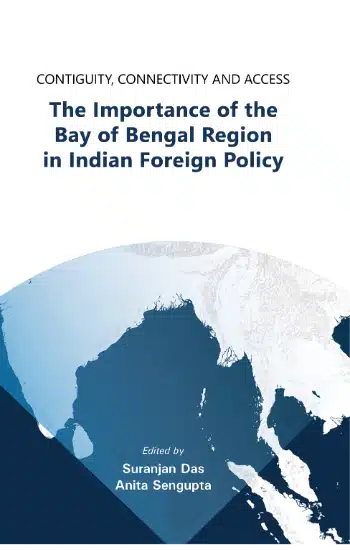
Save: 20%

Save: 30%
Contiguity, Connectivity and Access The Importance of the Bay of Bengal Region in Indian Foreign Policy
Publisher:
| Author:
| Language:
| Format:
Publisher:
Author:
Language:
Format:
₹1,080 ₹1,026
Save: 5%
In stock
Ships within:
In stock
| Book Type |
|---|
ISBN:
Page Extent:
A significant platform of maritime connectivity the Bay of Bengal is important not just for littoral states (India, Bangladesh, Myanmar and Sri Lanka) but also for the landlocked countries of Bhutan and Nepal. Since time immemorial the Bay had been a maritime highway witnessing the movements of traders and commodities facilitating economic exchange but also large scale labour migration which encouraged cultural cosmopolitanism and exchange of ways of life. With the increasing importance of the Indo-Pacific region in the contemporary connectivity matrix, the Bay of Bengal is once again acquiring greater strategic significance with its critical position as a bridge between South, Southeast and East Asia. For India the Bay of Bengal region is emerging as an area of strategic significance and a potential zone for Asian economic growth.
In this background, the volume examines themes like contemporary factors shaping the emergence of the Bay of Bengal region as a critical strategic theatre in Indian foreign policy; the inter-connectedness of the Indian and Pacific Oceans; the importance of oceans to security and commerce and India’s role within the broader region; the twenty-first century maritime Silk Road and Indian alternatives and the possibilities of reconnecting disconnected spaces through re-imagining a Bay of Bengal Community. In this connection the volume takes particular note of the emerging regional cooperative order for the promotion of peace and development in the Bay of Bengal region (BIMSTEC). The volume brings together historians, political analysts and political economists to emphasize the interconnectedness of the oceanic space through a detailed analysis of the Bay of Bengal as a space of strategic and economic significance, particularly for India, but also as a space for re-imagining a new regional community.
A significant platform of maritime connectivity the Bay of Bengal is important not just for littoral states (India, Bangladesh, Myanmar and Sri Lanka) but also for the landlocked countries of Bhutan and Nepal. Since time immemorial the Bay had been a maritime highway witnessing the movements of traders and commodities facilitating economic exchange but also large scale labour migration which encouraged cultural cosmopolitanism and exchange of ways of life. With the increasing importance of the Indo-Pacific region in the contemporary connectivity matrix, the Bay of Bengal is once again acquiring greater strategic significance with its critical position as a bridge between South, Southeast and East Asia. For India the Bay of Bengal region is emerging as an area of strategic significance and a potential zone for Asian economic growth.
In this background, the volume examines themes like contemporary factors shaping the emergence of the Bay of Bengal region as a critical strategic theatre in Indian foreign policy; the inter-connectedness of the Indian and Pacific Oceans; the importance of oceans to security and commerce and India’s role within the broader region; the twenty-first century maritime Silk Road and Indian alternatives and the possibilities of reconnecting disconnected spaces through re-imagining a Bay of Bengal Community. In this connection the volume takes particular note of the emerging regional cooperative order for the promotion of peace and development in the Bay of Bengal region (BIMSTEC). The volume brings together historians, political analysts and political economists to emphasize the interconnectedness of the oceanic space through a detailed analysis of the Bay of Bengal as a space of strategic and economic significance, particularly for India, but also as a space for re-imagining a new regional community.
About Author
Anita Sengupta is an area studies specialist engaged with the study of the Eurasian region. Her areas of interest include issues of identity politics, migration, gender, borders, critical geopolitics and logistics. She is a regular commentator on debates on Asian affairs. She has been Director, Calcutta Research Group.
Reviews
There are no reviews yet.
Related products
Strategic Rebalancing: China and US Engagement with South Asia
Save: 35%
China in Xi Jinping`s New Era: Politics, Economy and Foreign Policy
Save: 25%
Poles Apart: The Military And Democracy In India And Pakistan
Save: 20%
RELATED PRODUCTS
China in Xi Jinping`s New Era: Politics, Economy and Foreign Policy
Save: 25%
Poles Apart: The Military And Democracy In India And Pakistan
Save: 20%
Strategic Rebalancing: China and US Engagement with South Asia
Save: 35%



Reviews
There are no reviews yet.